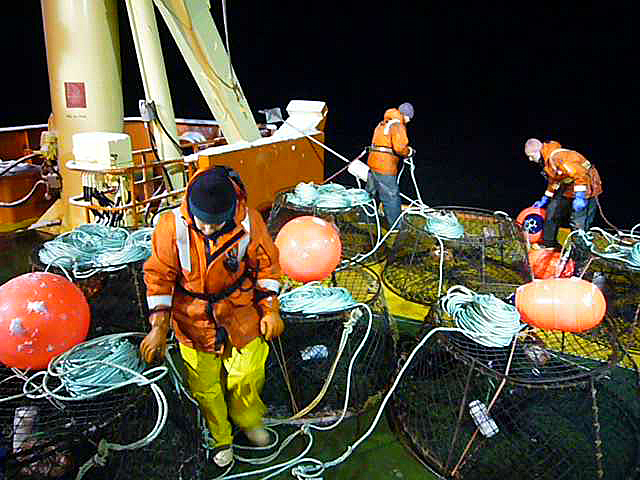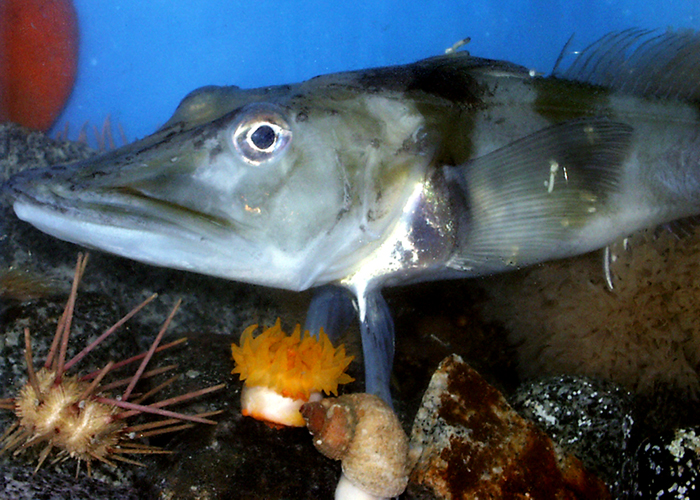|
The bloodless icefishesStrange fauna may reveal clues about anemias, osteoporosis and other diseasesPosted September 19, 2008
A brittle skeleton. A complete lack of red blood cells. Yet an ability to survive and thrive in a subfreezing marine environment. Antarctic icefish would seem to serve as odd specimens for study, a family of fish endemic to the Southern Ocean that probably couldn’t survive anywhere else after spending millions of years adapting and evolving in a freezer-like environment where the salty surface water is about minus 1.8 degrees centigrade. But such fish might help researchers in their quest to understand and eventually cure some bone and blood diseases because of the vertebrates’ unique characteristics, according to Bill Detrich, a professor of biochemistry and marine biology at Northeastern University in Boston “We’re interested in how the fish are able to fold their proteins in a cold, energy-poor environment,” explained Detrich in August, following a two-month excursion to Antarctica during the middle of the Southern Hemisphere winter. The trip involved fishing off the ARSV Laurence M. Gould “Our goal is to answer the question: how does this machine [of protein folding] work in an energy-poor environment,” he added. Proteins get it doneProteins, in the words of a somewhat famous cable guy, get ’er done: they’re behind many biological processes. As enzymes, they drive biochemical reactions that make biology work. They are the main constituent of muscles, hair, skin and blood vessels. As antibodies, they recognize intruders and prompt the immune system to get rid of the unwanted invaders. In order to carry out its specific function, each protein must take on a unique three-dimensional shape, in a process called folding. Detrich’s group is particularly interested in how a complex called CCT chaperonin assists other proteins in the folding process, especially their role in the folding of tubulins that form microtubules. Microtubules are one of the components of the cytoskeleton, a structure maintains cell shape and cell motility. Protein folding is often referred to as the “second genetic code,” according to Detrich, but scientists don’t understand the rules under which protein folding occurs. By observing protein folding at low temperatures, he said, it may be possible to develop insights into how protein folding works in all organisms. Going way backThe family of Antarctic icefish belongs to the suborder of perciform fish called Notothenioidei, which consists of eight families and more than 120 species. The Notothenoids eventually came to dominate Antarctic waters after the Drake Passage opened up about 40 million years ago, allowing a current of cold water to isolate the continent and turn it into an icehouse (though some scientists dispute the theory, and believe lower levels of greenhouse gases like carbon dioxide led to the deep freeze). [See related story: Open case.] Nearly all of the fish in the region eventually went extinct except for the Notothenoids, according to John Postlethwait, an investigator working with Detrich both on the protein folding/microtubule project and on a bone-density project recently funded by the National Institutes of Health A benthic fish, living on the bottom of the seafloor, the Notothenoids first evolved without swim bladders. The swim bladder is what allows many fish to move up and down in the water column. “It was advantageous for them not to float off the bottom, because they made their living by eating benthic invertebrates … that live in the mud, on the mud,” explained Postlethwait, with the University of Oregon in Eugene As the only fish in the sea, so to speak, the Notothenoids were able to exploit a variety of ecological niches over time. Lacking a swim bladder, the icefish eventually evolved a demineralized skeleton, becoming less dense, with the ability to float and go after new prey, such as shrimplike krill. “The fish pretty much ditched their skeletal system,” Postlethwait said. “That then allowed them to rise up in the water column without expending a great amount of energy to stay up and float and maintain neutral buoyancy.” Picking a bone with diseaseA trait that is an advantage for the icefish, a lightweight skeleton, is actually a disease in humans — osteopenia. Osteopenia is a bone condition marked by low mineral density, and may be a precursor to the more serious disease osteoporosis. “Evolution has produced a lot of interesting animals that have evolved through natural selection features that in humans are disease states,” Detrich noted. “If we understand the genetic pathway and how it is altered in these animals that don’t mineralize their skeletons very well, then it is almost certain that we will understand why the elderly, particularly women, often lose calcium from their bones.” In other words, by studying icefish, scientists may be able to pinpoint the cause of the osteoporosis disease in humans, which could eventually lead to a cure or medicine to control the condition. For their study, Detrich and Postlethwait are comparing the Antarctic yellowbelly rock cod (Notothenia coriiceps), which has a strong skeleton, against the blackfin icefish (Chaenocephalus aceratus) with its reduced skeletal structure. Postlethwait was successful in doing in vitro fertilization for the rock cod while at Palmer Station so he could continue to study its bone development back in the States. (Detrich is also making use of these embryos for studies of microtubule function in vivo at 0 degrees centigrade.) Unfortunately, the blackfin icefish spawned prior to Postlethwait’s arrival, meaning it wasn’t available for fertilization in the lab. It takes nine months for the eggs to hatch, Postlethwait noted. “It’s difficult for most scientists to spend that long a time period in Antarctica, because we have to teach and that kind of thing,” he said. “What we want to do is bring them back … and grow them and then follow them more conveniently.” Added Detrich, “By comparing these two fish, we can see what’s altered in the program of making bone, and that then teaches us something about osteopenia … and osteoporosis.” |



For USAP Participants |
For The Public |
For Researchers and EducatorsContact UsU.S. National Science FoundationOffice of Polar Programs Geosciences Directorate 2415 Eisenhower Avenue, Suite W7100 Alexandria, VA 22314 Sign up for the NSF Office of Polar Programs newsletter and events. Feedback Form |



